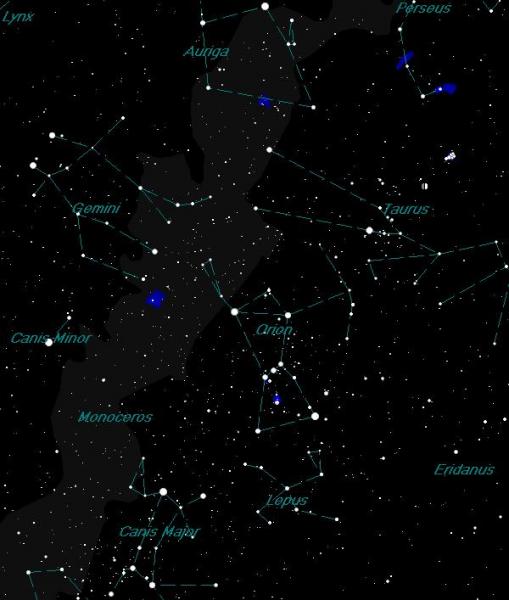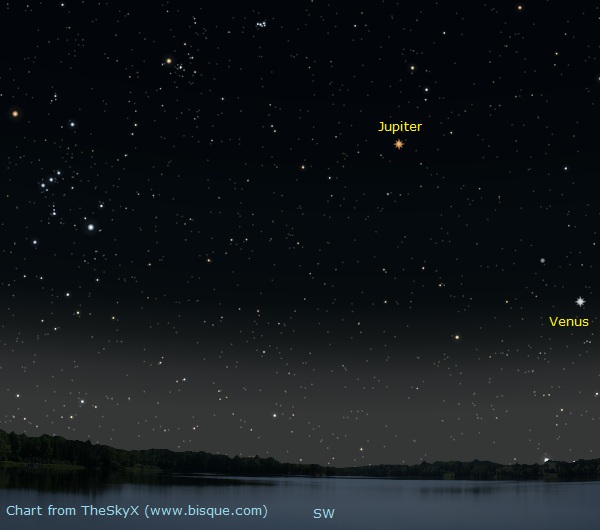Winter Wonderland
It is great to see our parent star - the Sun making the news once again. It started with an active region labelled sunspot 1402 and the M-9 solar flare that blasted off the sun’s surface on January 22nd at 10:59 p.m. EST. From that point on, the explosion and expected grand aurora displays were the talk on TV, radio and water coolers around the world. An astronomical event like this is a good catalyst for motivating people to learn more about the night sky.
The Coronal Mass Ejecta hurling through space at a staggering 2,200 km/sec hit our planet as predicted on the 24th at 10 a.m. EST produced an S3 solar storm resulting in spectacular auroral displays over Europe. In fact, a laboratory in Norway measured a surge in ground current. Some twelve hours later, the storm had passed. Some places in Canada and the lower states reported seeing Northern Lights but I am sure nothing like across the Atlantic Ocean.
Although sunspot 1402 is now pointing away from Earth it still blew out an X-2 flare on January 27th. Be sure to follow this spot’s activity over the next couple of weeks as the Sun rotates. If this intense region is still healthy, we might get a second chance to an aurora display but sunspots do not usually survive more than one revolution.
As we turn the calendar page to February, we find ourselves mixing the bad with the good. The bad news is in Canada, it is extremely cold for observing unless you have an observatory with a warm room. The good news is the mighty constellation Orion now sits on the meridian at 9 p.m. local time and is well placed for observing. Nestled within its 594 square degrees of sky are the three iconic stars forming his belt. This trio of suns from left to right is named Alnitak, Alnilam and Mintaka residing 700, 1,300 and 900 light-years respectively from us. The iconic belt rests on the celestial horizon and is perfectly positioned to be seen from any point on Earth. In fact, the orientation of the ancient pyramids matches exactly to the belt stars. Including Orion itself, a dozen bright suns light up the sky with the brightest being Sirius located to the lower left of Orion’s foot.
Speaking of Alnitak, look for the Flame Nebula only half a width of the full moon to the east. Designated as NGCC 2024, the Flame is a combination of emission and reflective nebulas. The Nebula is estimated to be some 1,300 light-years from us. Energetic ultraviolet light from within is causing the nebula to light up as a thick dark cloud gas and dust in front silhouettes the backlight – giving the resemblance of a flame.

Amongst the seven brighter prominent stars that define Orion’s shape or asterism, Betelgeuse is an interesting super giant orange star. First is its size. If Alpha Orionis replaced out Sun, its boundaries would expand a bit past the orbit of Jupiter. Betelgeuse resides 425 light-years from Earth and because of its girth, the Hubble Space Telescope was able to image its disk. Living its final stages in a cocoon of dust pushed up by its own solar winds, astronomers believe Betelgeuse if large enough to become a supernova when it finally dies. When the time comes, it will probably be as bright as the quarter moon and be seen during the day. After the explosion, its super-dense core will be a neutron star measuring the size of a small town.
On the opposite end of Orion’s right shoulder, we move down to his left foot and the star called Rigel. Officially listed by Bayer as the Beta star, this blue supergiant sun is a tad brighter than Betelgeuse. Astronomers estimate its distance to be about 800 light-years from us and if it replaced our Sun in the daytime sky, Rigel would appear 35 degrees wide or 70 full moons lined up in a row. I cannot imagine anything let alone a sun to span one-fifth of the sky. Rigel is the sixth brightest star in the entire sky and is a natural celestial lighthouse to objects in the area. With that said the Witch Head Nebula located just over the Eridanus, only two degrees west of Rigel and is wonderfully lit by the star’s light.
Catalogued as IC2118, the Witch Head is an old supernova remnant that is difficult to observe visually. Astrophotography shows us the true face and contour of the Witch Head. Observations from the Spitzer has shown infrared signatures in four of the six previously known T-Tauri stars and have found six entirely new candidates called young stellar objects (YSOs), one of which may possess an edge-on disk. Talk about recycling old star stuff.
NGC 1729 is one of the few galaxies that call Orion home. This 1.7 by 1.4 arc minutes is located an estimated 130 million light-years away and at 13th magnitude, could pose a bit of a challenge. NGC 1729 can be found in the lower right side of the constellation and is less than two degrees west of the bright reflection nebula NGC 1788.
Of course, the piece de resistance is the exquisite Orion Nebula. M42 is readily visible from light-polluted suburbs to the tranquil surrounding of the countryside. With dimensions of 45 light-years wide and 1,500 away, words are not enough to describe its delicate structure. One must peer through the eyepiece of a telescope to experience the brilliant Trapezium and subtle wings. Thanks to the sensitive optics of the Hubble Space Telescope, astronomers have photographed new stars with what appears to be developing solar systems in the nebula. These Evaporating Gaseous Globules (EGGs) measuring about 100 astronomical units wide, surround the parent star in a cocoon of dust and gas and hopefully the right stuff to make planets.
Comet Garradd (C/2009 P1) is climbing up the eastern side of the constellation Hercules, however, the constellation is now in the morning sky. With that said, set your clock early on the morning of February 3rd to catch the comet close to the globular cluster M92. On Groundhog morning, Garradd will be .6 degrees south of the cluster and the morning after it will be .5 degrees to the west. Ten days later from the 13 to 15, you might be able to catch its double spiketail (anti-tail) during a plane crossing.

The planets are nicely out in full force. We first have Venus high in the west, beaming brightly at magnitude minus 4. If you still have trouble spotting the planet Uranus, wait till the 9th as Venus will be located a mere .3 degrees north of the solar system’s seventh planet. This is half the width of the full moon so both will fit nicely in a low power eyepiece. Uranus currently resides 3.1 billion kilometres from Earth and it takes two hours and fifty-two minutes for the fuzzy bluish-green light to reach us.
Jupiter is now high overhead at sunset and slowly sliding to the west as Venus marches to the east. On February 1, the two brightest planets are separated by 41 degrees but shrinks to 12 degrees at month’s end. Venus will overtake Jupiter on March 13th. Next, we welcome the red planet Mars. The beginning of February sees Mars rising in the east at 9 p.n. local time and at magnitude (-0.6) is clearly the brightest object in that area. As Earth catches up to Mars to the March 3rd opposition (-1.2), it will get brighter.
Saturn – the ringed jewel is now creeping over the eastern horizon at midnight local time on the 1st along with the star Spica. Of the two, Saturn is on the left. It will become stationary on the 8th after which it will begin to slide west (retrograde motion) with the background stars. This leads into the Apr 15th opposition when the rings will be tilting nicely 13.7 degrees. Saturn is leading up to be the showpiece of spring and summer.
When planning observing sessions, the full Snow moon occurs on the 7th at 4:54 p.m. EST and new moon occurs 14 days later on the 21st at 5:35 p.m. EST.
Until next month, clear skies everyone.
